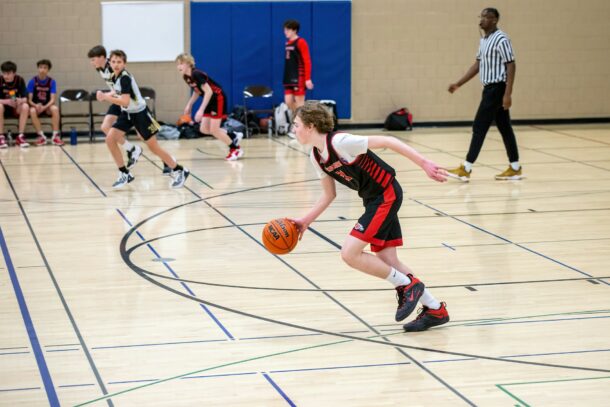Are you a basketball coach eager to elevate your team’s defensive prowess? Look no further! In this comprehensive guide, we delve into the intricacies of the Packline Defense system, with a specific focus on its application in half-court man-to-man defense. Discover how this strategic approach can transform your team’s defensive capabilities and keep your opponents on their toes.
Understanding Packline Defense
Packline Defense is a tactical approach that prioritizes team unity over traditional player positions. Unlike conventional systems, Packline encourages players to work in unison, promoting seamless switching and fluid movement on the court.
Coaches employing this strategy aim to create a formidable defense that denies easy access to the paint, forcing opponents into challenging three-point shots.
Mastering the Half-Court Set Up
In the world of basketball coaching, the half-court is where games are often won or lost. With Packline Defense, the setup is dynamic and adaptive. To begin, assign one player to mark the ball handler and position two players near the elbow.
This initial formation ensures a strong defensive presence and allows for quick adjustments based on the ball’s movement.
Player Movement and Defensive Strategy
Packline Defense thrives on coordinated movement and strategic positioning. As the ball shifts to the right or left, the defense adapts, with weak-side defenders promptly filling the paint. This strategy not only makes layups challenging for opponents but also forces them into less favorable three-point attempts.
The emphasis here is on teamwork, ensuring that no offensive player can cut through the paint without a defender shadowing their every move.
Effective Defensive Strategies
To excel in half-court man-to-man defense, it’s crucial to understand Packline’s core principles. Pinch into the paint—this means weak-side defenders should prioritize protecting the paint over sticking closely to their assigned players.
This strategic choice limits offensive options, especially close to the basket.
Enhanced Aggression with Double Teaming
For coaches seeking a more aggressive approach, consider incorporating double-teaming in specific situations. When the ball moves to the low post, a weak-side defender can drop in and double-team with the player guarding the post.
While this adds pressure and congestion in the paint, coaches must be aware of potential drawbacks, such as leaving shooters open if the ball is kicked back out.
Win the Season: Basketball Masterclass!

5 Key Points for Mastering Half-Court Man-to-Man Defense:
- Adaptive Formation: Utilize a dynamic setup with one player on the ball handler and two players near the elbow, ready to adjust based on ball movement.
- Swift Defensive Adjustments: Train your team to adapt quickly to the ball’s movement, ensuring strong weak-side defense and effective paint protection.
- Teamwork Over Positions: Emphasize the collective effort, as Packline Defense minimizes the significance of traditional player positions in favor of cohesive team play.
- Strategic Pinching: Prioritize defending the paint over sticking closely to assigned players, limiting offensive options close to the basket.
- Double-Teaming Dynamics: Explore the option of double-teaming in specific situations to apply additional pressure and disrupt the opponent’s offensive flow.
In conclusion, mastering half-court man-to-man defense using Packline strategies requires a blend of teamwork, adaptability, and strategic decision-making. As you implement these techniques, remember to drill your team on movement patterns and defensive rotations for optimal effectiveness.
Ready to take your coaching to the next level? Subscribe for more insights and explore additional resources at teatroops.com. Elevate your team’s defensive game and leave your opponents in awe with Packline Defense mastery!
Related: Mastering the 3-2 Zone Defense
Coach Unplugged Podcast:
If you found this useful, don’t forget to check out additional blog posts at TeachHoops.com. Also, check out TeachHoops on Facebook, Twitter, Instagram and YouTube.







